Units of the Azerbaijani army on Friday morning entered the Aghdam region, a territory ceded by Armenian forces in a cease-fire agreement that ended six weeks of heavy fighting over the separatist region of Nagorno-Karabakh, Azerbaijan's Defense Ministry said.
The truce, brokered by Russia last week, stipulated that Armenia hand over control of some areas its holds outside Nagorno-Karabakh’s borders to Azerbaijan. The first one, Aghdam, is to be turned over on Friday.
Nagorno-Karabakh lies within Azerbaijan but has been under the control of ethnic Armenian forces backed by Armenia since a separatist war there ended in 1994. That war left not only Nagorno-Karabakh itself but substantial surrounding territory in Armenian hands.
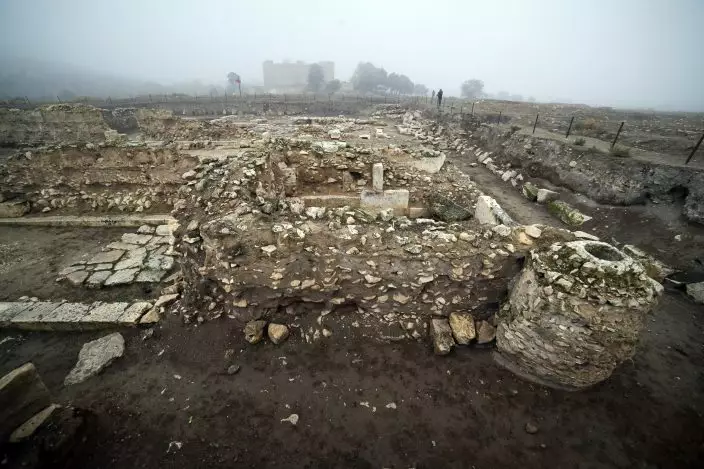
FILE - In this file photo taken on Wednesday, Nov. 18, 2020, a journalist looks at a ruined Tigranakert, Armenian city dating back to the Hellenistic period, in the separatist region of Nagorno-Karabakh. In marked contrast to the thorough destruction of Agdam city, ethnic Armenians have taken assiduous care of one of their major historical sites in the province. The foundations of ancient Tigranakert, some two millennia old, have undergone archaeological excavation and some of what has been found placed in an 18th century fortress. (AP PhotoSergei Grits, file)
Heavy fighting that flared up Sept. 27 marked the biggest escalation of the decades-old conflict between the two ex-Soviet nations in over a quarter-century, killing hundreds and possibly thousands of people.
The truce last week halted the violence after several failed attempts to establish a lasting cease-fire. It was celebrated as a victory in Azerbaijan, but sparked mass protests in Armenia, with thousands regularly taking to the streets to demand the ouster of the country's prime minister.
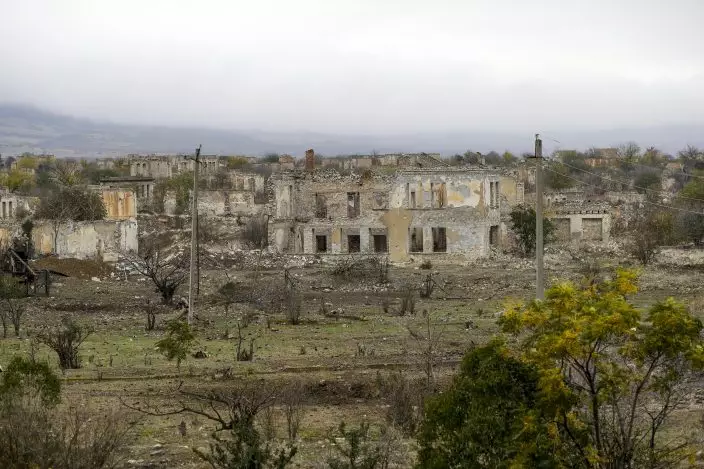
A view of a vast expanse of jagged concrete and houses reduced to shells in Agdam, prior to the Azerbaijani forces being handed control in the separatist region of Nagorno-Karabakh, Thursday, Nov. 19, 2020. Although regaining Agdam is a triumph for Azerbaijan, the joy of returning is shot through with grief and anger. What was once a notably pleasing city of 50,000 known for its white homes and an elaborate three-story teahouse is so ruined that it's sometimes called the "Hiroshima of the Caucasus." (AP PhotoSergei Grits)
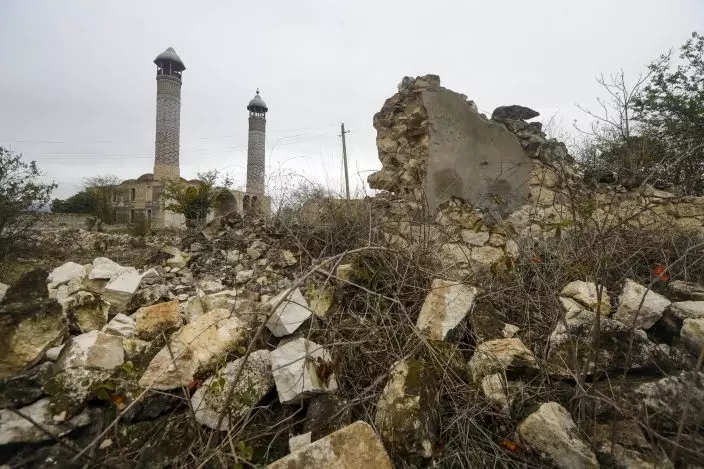
The Aghdam Mosque is seen through ruins in Agdam, prior to the Azerbaijani forces being handed control in the separatist region of Nagorno-Karabakh, Thursday, Nov. 19, 2020. The mosque itself is an especial sore point. In the years after the local population was driven out the mosque was turned into a stable for cattle and swine. Although ethnic Armenian forces tried to keep outsiders away from Aghdam, some camera-bearing visitors slipped in and their photos of the mosque's defilement outraged Azerbaijanis. (AP PhotoSergei Grits)
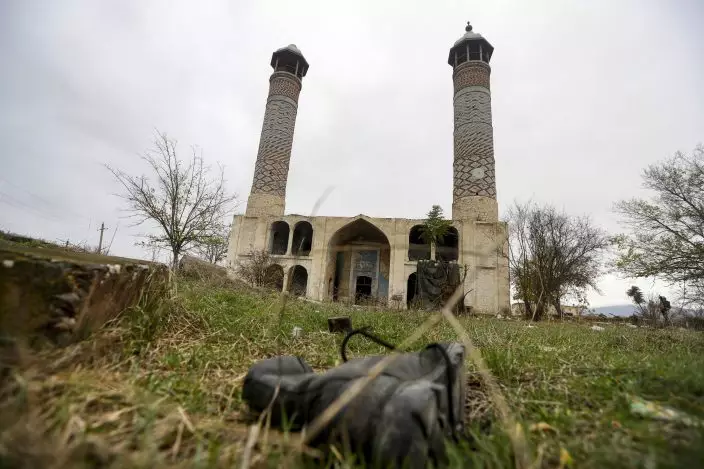
A military boot lies on the grass in front of the Aghdam Mosque in Agdam, prior to the Azerbaijani forces being handed control in the separatist region of Nagorno-Karabakh, Thursday, Nov. 19, 2020. The mosque itself is an especial sore point. In the years after the local population was driven out the mosque was turned into a stable for cattle and swine. Although ethnic Armenian forces tried to keep outsiders away from Aghdam, some camera-bearing visitors slipped in and their photos of the mosque's defilement outraged Azerbaijanis. (AP PhotoSergei Grits)

A view of a vast expanse of jagged concrete and houses reduced to shells in Agdam, prior to the Azerbaijani forces being handed control in the separatist region of Nagorno-Karabakh, Thursday, Nov. 19, 2020. Although regaining Agdam is a triumph for Azerbaijan, the joy of returning is shot through with grief and anger. What was once a notably pleasing city of 50,000 known for its white homes and an elaborate three-story teahouse is so ruined that it's sometimes called the "Hiroshima of the Caucasus." (AP PhotoSergei Grits)
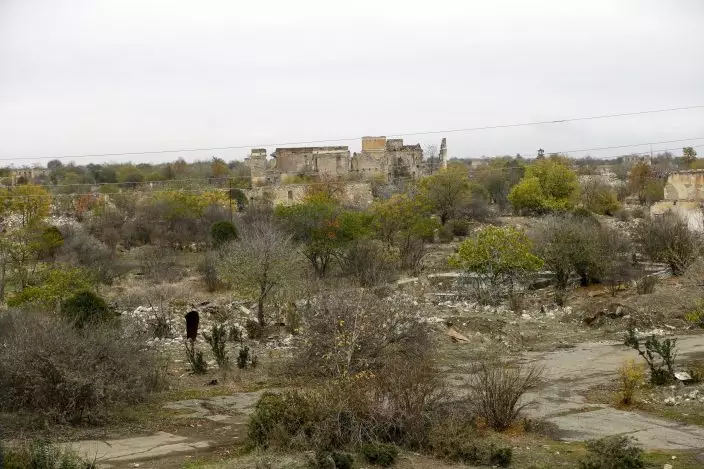
A view of a vast expanse of jagged concrete and houses reduced to shells in Agdam, prior to the Azerbaijani forces being handed control in the separatist region of Nagorno-Karabakh, Thursday, Nov. 19, 2020. Although regaining Agdam is a triumph for Azerbaijan, the joy of returning is shot through with grief and anger. What was once a notably pleasing city of 50,000 known for its white homes and an elaborate three-story teahouse is so ruined that it's sometimes called the "Hiroshima of the Caucasus." (AP PhotoSergei Grits)


